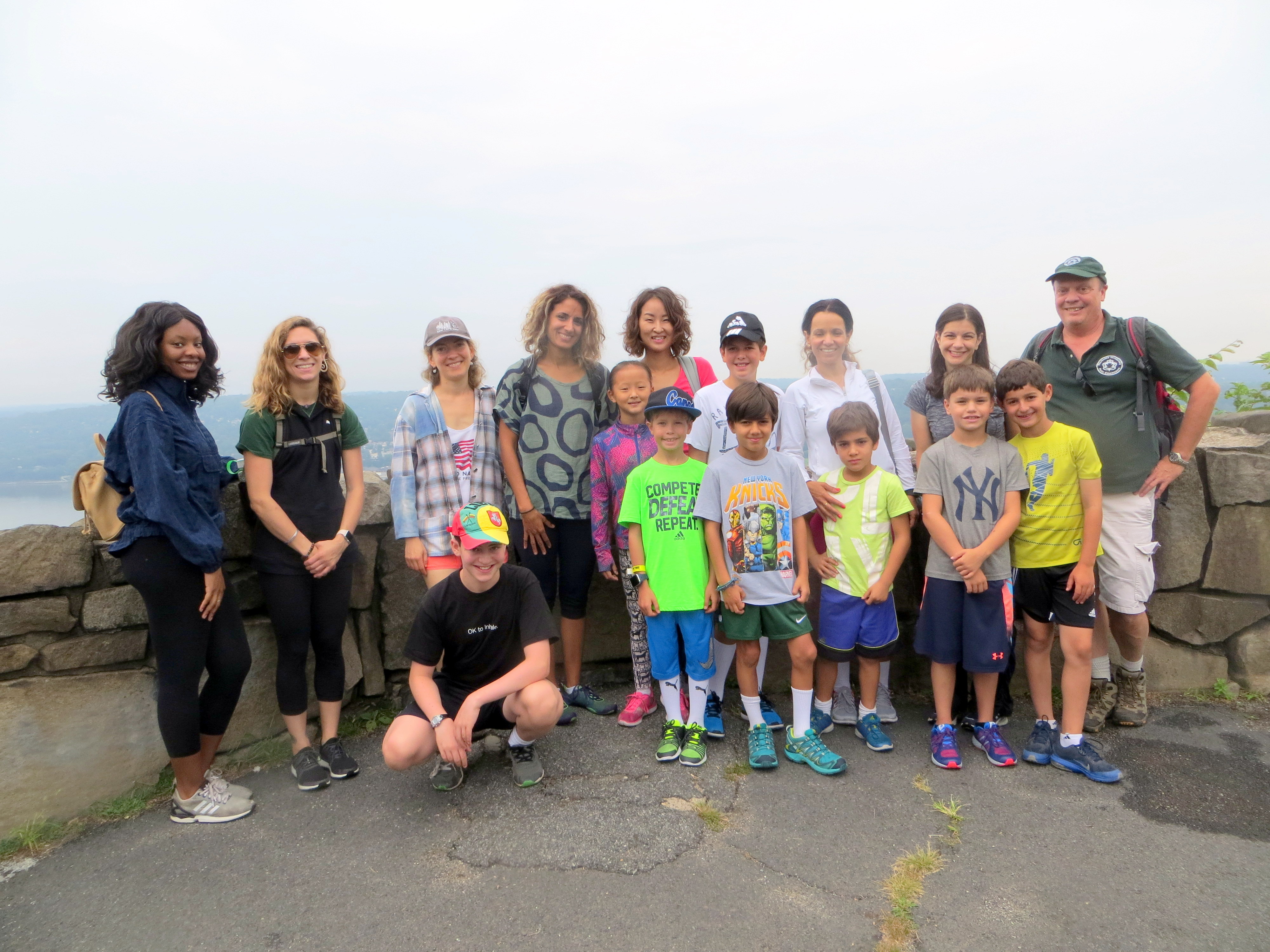
BY HILLARY VIDERS
SPECIAL TO NORTHERN VALLEY PRESS
PALISADES INTERSTATE PARK, N.J.––This summer, children from all over Bergen County are enjoying a fascinating uphill – as well as downhill – look at the history of the Palisades. The historic Kearney House, under the direction of the Palisades Interstate Park Commission, has once again been sponsoring Rachel’s Rangers, a series of weekly hiking adventures for children ages 7 and up and accompanying adults.
Rachel’s Rangers get to explore many of the scenic areas of the Palisades Interstate Park, an adventurer’s wonderland that is 12 miles long and half a mile wide, containing 2,500 acres of wild Hudson River shorefront, stone steps, uplands and cliffs.
The program, now in its 11th year, continues to attract young outdoor enthusiasts and rewards them for perseverance. Children that complete three or more of the hikes receive a certificate designating them as official Rachel Rangers.
The name Rachel’s Rangers got its name from the once influential local figure, Rachel Kearny (1780-1870), who in the 19th century raised nine children and kept a tavern at the Kearney House, a river front homestead that was rumored to have housed a British general for a night in 1776. In 1980, Kearney House was designated a historical landmark.

Today, Kearney House helps bring to life two centuries in the story of the Hudson River and the families who depended upon it for their lives and livelihoods. The Kearney House has been preserved by the Palisades Interstate Park Commission with the ongoing assistance of the New Jersey State Federation of Women’s Clubs.
On Aug. 15, Palisade Interstate Park Commission Historical Interpreter Eric Nelsen led eight youngsters and their moms on a hike to “Who Rock.” Nelson was assisted by Lindsey Foschini and Amina Wangongo.
The hikers met at 10 a.m. at the State Line Lookout on the Palisades in Alpine. Nelson began leading the hike on the Long Path along the top of the cliffs, which is the highest point in the New Jersey Palisades.
Nelsen gave an orientation that included fascinating historical information, such as the role that the Hudson River and the Palisades played in the Revolutionary War and the fact that in the late 19th and early 20th centuries, millions of people went swimming in the Hudson River and there were numerous beaches along the shoreline.
The group soon encountered several sets of stone steps that they climbed, followed by a steep uphill trail. This led them to the Women’s Federation Monument, (known as “the castle”), a medieval-castle-like watchtower on a cliff top in Alpine near State Line Lookout on the Palisades Parkway.
The castle immediately elicited squeals of “Whoa! Look at that!” from the children. As they scrambled up the little flight of stairs to the stone battlement, they were able to look out over the Hudson, a mile wide and 520 feet below.
The Women’s Federation Monument was dedicated in 1929 to honor the role that the New Jersey State Federation of Women’s Clubs took in preserving the Palisades from the onslaught of quarry blasting, a practice that began in the 1890s to extract gravel for roadbeds and broken stone for concrete.

The design of the Women’s Federation Monument was meant to evoke the ancient watchtowers along the River Rhine in Europe, reminiscent of the name that poets had given the Hudson, “the Rhine of the New World,” referring to its scenic beauty.
From the monument, the group headed south and walked around the old Timken-Burnett estate grounds. Nelsen passed around photos of how the Timken-Burnett estate looked in 1933, and he gave fascinating details of the couple’s life.
Nelsen explained that John Burnett and Cora Timken had bought 40 acres at the top of the Palisades. Burnett was an osteopath who was working on what he hoped would be cures for all illnesses using electromagnetic energy, so they built a laboratory (which subsequently burned down). Timken was an artist and a sculptor, so she designed the structures (that all had curves), including a swimming pool shaped like a serpent, a main house and a separate building for their dining room with a huge pipe organ that played while they ate dinner.
Another highlight on the tour was the scenic viewpoint called Ruckman Point, which led the group to their final destination, a stunning lookout point called Who Rock. The spot got its name in the 1970s when a fan of the rock band The Who spray painted the name on one of the large boulders in the area.
After an exhilarating 3.5-mile expedition, several members of the group were already making plans to return for more hikes in the program. This is not surprising, because the Rachel’s Rangers program gives children and adults the opportunity to enjoy scenic sites and wildlife on the Palisades as they learn about the history of this magnificent treasure. It is truly an experience not to be missed!
Photos by Hillary Viders




